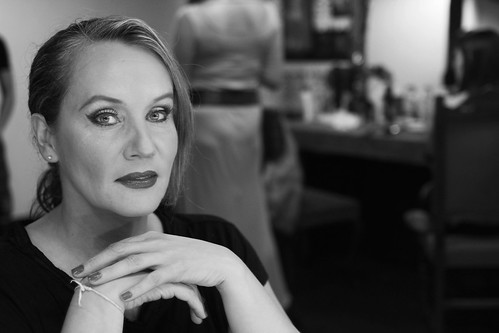


In East Africa, Fine Art Meets Conservation
We always recommend using the “Full Screen” feature to view photographs on Lens. Here, we kindly demand that you click it.Nick Brandt’s stark and soulful portraits are an intimate glimpse at a world under siege. A mournful ranger holds poached ivory tusks, an abandoned ostrich eggs sits on a stretch of parched earth and a small herd of elephants surrounds a skull.
Mr. Brandt has been photographing the threatened wildlife of Kenya and Tanzania for more than a decade and has released his work in two volumes: “On This Earth” (2005) and “A Shadow Falls” (2009). He’s now halfway through shooting the final volume, and a selection of that new work opens at the Fotografiska Museum in Stockholm on Oct. 6.
Over the years, his photographs have taken on an intentionally darker tone to reflect increasing pressures on the region, mainly from demand by Asian markets. Raw ivory now fetches up to $800 per kilogram and rhino horn is worth more per ounce than gold dust, according to the World Wildlife Fund. Elephants that Mr. Brandt photographed just a few years ago have already been killed.
“It’s getting harder and harder to capture these animals because every year there’s less of them,” Mr. Brandt said. “So I’m actually taking longer and longer to take these photographs but my mission is still to try and show them as sentient creatures.”
His first book was a vision of an Edenic paradise with lush landscapes and ethereal moments like a cloud of dust exploding over an elephant’s head while the scenes in his second book become progressively emptier and drier. By the end, the trees have vanished and the water has evaporated.
You will not find action shots or telephoto lenses — the usual hallmarks of wildlife photography — in Mr. Brandt’s work. He opts for tight and solitary portraits in sepia or black and white. The resulting photographs feel like artifacts from a bygone era.
“I’m waiting for the moment where the animal seems like they’re posing or where they’ve set themselves into a landscape like an Edward Curtis,” Mr. Brandt said.
This means he can spend weeks with an animal without taking a single photograph. For a profile of a lion in Kenya’s Maasai Mara, he watched it sleep under clear blue skies for 17 days. But the moment of satisfaction finally came when a strong wind blew in and the lion sat up (see photo 5 in the slide show above).
Working with guides, Mr. Brandt shoots almost exclusively from a car with a medium-format Pentax 67II and spends three months of every year photographing all around East Africa. (He’s based in southern California).
“What I’m doing feels slightly insane in its impracticality, especially coming from being a director where you’re a control freak and with animals, you’re anything but in control,” he said.
Mr. Brandt’s introduction to the region came through his previous career as a music video director. In 1995, he went to Tanzania to work on Michael Jackson’s “Earth Song” and was enraptured by what he saw.
“It was so moving. I felt like I was watching these incredible creatures move across a landscape before man was around,” Mr. Brandt said.
Frustrated that he couldn’t quite capture this same sense of awe with video, he left his successful commercial career for photography. Lately, he’s also expanded into serious conservation work with his non-profit Big Life Foundation, which focuses on wildlife in the Amboseli ecosystem in Kenya and Tanzania.
With donations from Mr. Brandt’s photography supporters, the year-old organization now has 120 rangers, all local, who collaborate with communities to reduce poaching and conflicts between farmers and wildlife.
“I’m a pessimist, but that doesn’t mean I’m going to give up on trying to limit what’s happening,” Mr. Brandt said. “Sometimes you have to realize that it’s extraordinary that there are any elephants left at all.”
He plans to release his third book in September 2013 and says the title will complete a sentence he started with his two earlier book titles, “On this earth a shadow falls…”





























 It doesn’t always work. Models can, after all, be divas. “It’s not something that you have a lot of control over,” Ms. Davidson acknowledged with a laugh.
It doesn’t always work. Models can, after all, be divas. “It’s not something that you have a lot of control over,” Ms. Davidson acknowledged with a laugh.
